- Home
- David Hewson
The Sacred Cut Page 8
The Sacred Cut Read online
Page 8
Costa glanced at the photo again and the kid’s dark, desperate eyes.
“Yeah,” he murmured. “You bet it’s OK.”
THE AMERICAN EMBASSY stood on a steep bend on the Via Veneto, a stiff climb up from the Piazza Barberini. Here, behind well-guarded iron gates, a small army of diplomats, paper-pushers, military officers, immigration officials and, for all Costa knew, professional spooks populated the elegant nineteenth-century labyrinth of corridors of what had once been the Palazzo Margherita.
Leo Falcone met them in the waiting room, silent and serious in a grey business suit. To Costa’s surprise, Teresa Lupo was with him, twiddling her nascent ponytail, a touch scruffy in an old winter jacket and jeans, and not happy either.
“How are you, Gianni?” she asked Peroni as they all sat together, waiting.
“I’m doing just fine,” Peroni replied. “No offence, but what the hell are you doing here?”
“Working,” she answered gruffly. “If I’m allowed. Do you have a problem with that?”
He grunted something that sounded like an apology.
“She’s here because I wanted her here,” Falcone interposed. “Whatever papers these people have, that body still has to be accounted for.”
“Told you,” Teresa added. “Just the fucking typist.”
“If that’s the way you see it,” Falcone murmured, watching a tall man walk towards them, some papers in his hand. “But let’s keep these arguments to ourselves, please.”
The embassy official introduced himself as Thornton Fielding. He didn’t look like a natural colleague for Agent Leapman. Fielding was diplomatic and articulate. He wanted their signatures on some nondisclosure papers too.
Falcone stared at the paperwork. “This is Italy, Mr. Fielding. I’m not in the habit of signing forms about what I will or won’t do in my own country.”
Fielding didn’t even blink. “Technically, Inspector, this is the sovereign territory of the United States of America. Either you sign these forms or you don’t get to see Agent Leapman.” He hesitated. “Personally I’d find that a damn good reason for not signing, but the choice is yours.”
“You like him too, huh?” Peroni asked.
“He’s just the most fun guy you’re ever going to meet,” Fielding said quietly. “Now are you putting your name to these or not?”
When they were done he made a call from the desk. They watched as Emily Deacon walked down the corridor towards them.
“Nice woman,” Fielding said. “Don’t judge her by the company she keeps.”
Then he disappeared down the corridor, leaving them to Emily Deacon. They followed her and watched as she swiped an ID card on the security door to what turned out to be a large, high-ceilinged office.
Agent Leapman was seated in a leather executive chair behind a polished walnut desk, squeezed into a tight white shirt with the sleeves rolled up to display beefy, powerful arms. Emily Deacon, surely the junior partner in this relationship, motioned them to a leather sofa, then perched on a chair next to him, demure in plain brown slacks and a cream shirt. She held a notepad on her lap and could, Costa thought, have passed as a secretary, were it not for the intent way she kept shuffling through a pile of papers on the desk, looking as if she knew every last sheet.
“I appreciate you coming here.” Leapman spoke with no visible emotion as he played with a remote switch in his hand. The blinds on the window slanted to block out the security lights outside. A small screen came down from the ceiling.
“We had a choice?” Teresa asked.
“Not really,” Leapman replied. “I know I said I wasn’t dictating who could come to this meeting, Falcone, but I rather expected it would be police only.”
Falcone took a deep breath before answering. “A piece of paper from the Palazzo Chigi doesn’t change Italian law. Miss Lupo has to sign a death certificate for the woman. She’s every right to be here. You can make a phone call to check if you want.”
Leapman allowed himself a brief glance towards Emily Deacon, one that said, See, I told you what they’re like.
“OK,” he grumbled. “Just remember what the deal is here. This is for you people only. I don’t want to read it in Il Messaggero tomorrow morning. Deacon…”
He passed over the remote and she hit the button. A photo came on the screen. It was a building Costa recognized from somewhere, then a series of shots of the same place, taken from different angles: a rose-coloured temple of some kind, shot in bright sun, near fountains and water, with a large rotunda dome supported by open columns.
“It looks like the Pantheon,” Peroni said immediately.
“It should,” she said. “It’s the Palace of Fine Arts in San Francisco. Built for the 1915 International Exhibition. The architect, Maybeck, was trying to re-create something classically Roman, like an engraving by Piranesi of some half-ruined temple.”
“Nice,” Peroni answered. “You got a corpse there too?”
She nodded, surprised perhaps that he got the point so quickly. “Last May. It was the first, as far as we know.”
“Who?” Falcone asked immediately.
“A man,” she said. “Just a tourist from D.C. In spite of what we saw today we don’t think this is sexual. We could be wrong…”
Leapman rocked his chair to and fro in disapproval.
“We just don’t know,” she continued. “The building is near the Marina. Pretty safe most of the time, but San Francisco’s a city with some rough parts nearby. The cops wrote it off as street crime. Just one thing, though.”
She pressed the button and ran through a new series of photos. They were of the victim, facedown on the rose-coloured stone floor. He was naked from the waist up. The cord that had been used to strangle him still dug deep into the flesh at the back of his neck. A rough pattern was cut into his lower back in an approximation of the shape they’d seen in the Pantheon that morning.
Leapman cleared his throat, lit a cigarette and said, “He was still practising then. It took a little while before he got it right. Next.”
More photos, this time of a stumpy circular tower with two galleries at the summit, pointing up into a clear blue sky.
“Coit Tower, also San Francisco,” Deacon continued. “Three weeks later they found this when they were opening up for the day. On the floor of the tower too. Our guy’s good with locks.”
It was another corpse. Totally naked this time. A man, facedown, with grey hair. He was running to fat. Perhaps fifty. The cuts on his back were a little less ragged. The pattern was larger, running out to the folds of flesh at his waist, and more distinct: a geometric dance of angles and curves that made a recognizable image.
“Who was he?” Falcone demanded.
“Tourist from New York,” Leapman replied. “Traveling alone. He’d been hanging out in gay bars, which complicated things for a while.”
They could just about make out the withering glance Leapman was casting them across the room. “That’s the trouble with city cops,” he continued. “Narrow minds. They like to jump to quick conclusions. The San Francisco guys figured they had another dead queer on their books. They didn’t even call us in. We hadn’t a clue any of this was starting to happen. Not for another month.”
He nodded at Emily Deacon. She cued up a shot of a classical building, with a white colonnaded portico and a rotunda dome, partly in brick. Only the stars-and-stripes flag fluttering from a pole told them this was not in Italy.
She took up the story. “Monticello, Charlottesville, Virginia. End of June now. This was Thomas Jefferson’s home, which may or may not be significant. Jefferson designed it himself. The neoclassical influence probably comes from his time as ambassador in Paris but you don’t need to be an architect to see where the idea originated.”
“Dead tourist in the hall when they opened up,” Leapman interjected impatiently. The image of a body came up on the screen. “Woman this time, local, from Virginia. You can imagine the picture.”
“Still noth
ing sexual?” Falcone asked.
Leapman shook his head.
“Can I see the autopsy reports for some of these people?” Teresa Lupo asked.
“No,” Leapman replied. “We don’t have copies here. Besides, I don’t see the point.”
“Maybe—” she began.
“The answer’s no. Next.”
It could almost have been the same building, except for the window in the portico, which had now changed shape.
“This is Jefferson too,” Emily Deacon explained. “The University of Virginia just around the corner. The Rotunda is effectively a half-size copy of the Pantheon. Just four days later. A man’s body in the centre of the hall, and this is pretty much what we saw today. The killer’s got the pattern he wants now and he doesn’t shift from it.”
She keyed up the corpse. The arms and legs were at the selfsame angle as those of the woman in the Pantheon. A second photo showed the cadaver turned onto its front.
“His scalpel work is improving,” Leapman said.
“Plus,” Deacon interjected, “he’s getting picky about the way he positions the body. The head faces due south. He kept to that afterwards. From now on, too, he alternates the position of the limbs. Sometimes angled like this. Sometimes with the feet together and the arms at ninety degrees to the torso.
“The point about facing south is particularly odd,” Emily continued, “because in most of those buildings there was no obvious reason. They weren’t aligned in any particular direction. We only picked up on this later. In the Pantheon itself the entrance and the high altar do face north-south. You could see why he’d lay the body that way. All these ones before—it’s as if he was planning for what happened last night. As if the Pantheon was some kind of final destination.”
“How hard is it?” Costa said.
“What?” Leapman asked.
“What he’s doing to their back.”
Leapman looked at his colleague. He seemed out of his depth once he went beyond purely procedural matters.
“It’s not simple and it’s not that difficult either,” she said. “I can give you the summary of the psychological profiling later. We’re not done here yet.”
Another photo, a tiny circular building almost hidden in a wood, but still with an obvious ancestry. “We were on the case by this time but he wasn’t making it easy for us. There was another hiatus now, until the middle of July. Perhaps he was worried he was pushing his luck. This is a folly in Chiswick, west London. Again, an American visitor. This time a woman.”
Now another Pantheon copy, this time by a lake. “Ten days later, Stourhead in Wiltshire, southwest England. By now he’s stretching out the miles. Maybe he knows we’ve seen something. Maybe he wants us to see something.”
A familiar facade from Venice filled the wall. “End of August. Il Redentore. By Palladio, which has clear echoes of the Pantheon. The killer’s playing games and earning a lot of air miles. The victim’s a man this time.”
“How many?” Falcone asked. “In all?”
“Seven that we know of, excluding last night,” she said. “There’s nothing to suggest we have them all, though. This guy’s clever. He hops countries. He kills at unpredictable intervals. It’s only over the last few months that we’ve managed to collate the information to prove there’s a pattern that goes beyond those first killings in the States. All we know for sure is that he’s murdered five men and three women. All American. All Caucasian. All middle class. All unexceptional. For all we know they were picked at random to prove a point.”
“Which is?” Costa asked.
She played with the remote and pulled up a composite shot, seven scarred backs, each with the flesh marked in a similar fashion, then moved on to a graphic.
“This is the pattern from one of the later deaths. Probably the closest he got to what he was trying to achieve.”
She turned on the room light, picked up a printout of the composite of the wounds, and placed it on Leapman’s desk. Then she reached into a drawer and took out a thick black pencil, a ruler and a compass and drew a square on the sheet, almost to the edges.
“The pattern’s actually a subset of a more complicated idea.”
Very quickly, with the kind of skill Costa associated with an architect or an artist, she marked four straight lines inside the square, running from the point where the arms of the cross met the perimeter. Finally, she used the compass to join the points where both the curving lines and the straight ones met at the edge, describing a perfect circle.
“This is what’s called the sacred cut,” she told them. “With the first couple of victims you can even see the marks he used to align it properly.”
She pulled up two morgue shots, early versions of the shape. “If you look closely, you can see he drew a couple of lines in felt-tip to help him get the hang of things. The other pointer to suggest a link is the way he alternates the position of the limbs. This is a direct reference to the Vitruvian Man. A naked man, arms and legs outstretched, vertical and horizontal. Drawn within both a square and a circle. It’s the same concept.”
She exchanged a brief glance with Costa. He understood the prompt.
“Like the body in the Pantheon,” he said. “I get it.”
“Good for you,” Leapman muttered, making a point of looking at his watch. “So, Agent Deacon. You’re the architect here. What does it mean?”
“I have a degree in architecture,” she replied. “It doesn’t make me an expert.” She struggled to form the right answer, then looked at each of them in turn, as if to make sure they understood: she wasn’t too sure of all this herself. “On one level it’s a construct used to explain the geometry behind ancient architecture. On another it’s a metaphor for perfection, kind of a mystical symbol. It’s supposed to represent a faultless union between the physical world and the spiritual one. Remember the way the body was laid out in the Pantheon?”
She sketched out a copy of the familiar da Vinci sketch, rapidly and with some skill. “The Greeks were the first to set down in writing the idea that great buildings depended upon precise geometric proportions, though they probably stole it from Asia and the Middle East because you see the same theory in earlier buildings there. The Romans picked up the belief that those proportions came directly from the Gods through the shape of a human being. Vitruvius was a soldier under Julius Caesar before he became an architect. He wrote ten books that became the bible on the subject. They got lost for some centuries, until the Renaissance, when Vitruvius again became the primary source for most of the architects we respect today. Michelangelo drew Vitruvian bodies constantly, with limbs in both positions along the perimeter, trying to get inside the idea, and he wasn’t the only one.”
Emily Deacon placed both drawings side by side on the desk. “Vitruvius used the human body—a holy vessel as far as he was concerned—as the starting point for the proportions needed to create the perfect building.”
Her slim fingers traced the outlines of the shapes. “The Vitruvian Man squares the circle, just as the making of the sacred cut does. This had a religious importance. It symbolized the marriage of the earthly, the physical fact of the square, with the ineffable perfection of the celestial, the circle. It was about…” She looked across at Leapman, who was beginning to get restless with the explanations. “Finding some kind of truth, God even, inside a shape. The shape of a human body. The shape of a building. The proportions are the same. Look at these.”
She indicated the outlines of the sacred cut. “There you have just about every shape and proportion you are going to find in a great building. Even the rectangles the cut creates fit a classically correct, arithmetic rule an architect calls the golden mean. It’s the way things are meant to be.”
Costa tried to remember some of his old art lessons. They’d talked about the golden mean. It permeated everything: architecture, sculpture, painting, mathematics, even music.
Deacon wasn’t done. “When this man, whoever he is, places a body in the cent
re of the Pantheon, or a place like it, what he’s doing is making some kind of statement. Laying down a piece in a puzzle, trying to complete the picture. The Pantheon is simply a larger version of the geometric pattern he’s describing with those dead limbs. A circle cut by a square. The woman lay where Hadrian must have once stood himself, looking out from the focus of an artificial cosmos, through the eye of the oculus, out to what he regarded as heaven. She was at the epicentre of this structured view of the universe he created. Equally, the real universe was looking back at her. Whoever this man is, he knows all this. He’s not just some… nut.”
“Really?” Leapman sighed. “So where does this get us? Profiling has got us nowhere so far.”
“I don’t know yet,” she half snapped in reply. “Maybe it makes him feel he’s holy somehow. Maybe he’s looking for something, trying to get order back into his world. But we’ve no data, so it’s just guesswork. There’s a missing piece here. This man is smart, educated and very, very capable. Something started him on this path. If we could find out what that is—”

 The Garden of Angels
The Garden of Angels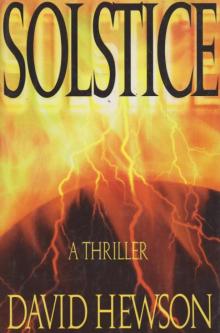 Solstice
Solstice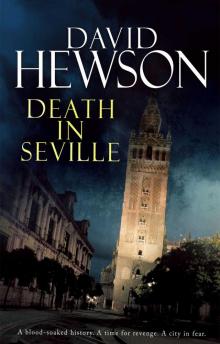 Death in Seville
Death in Seville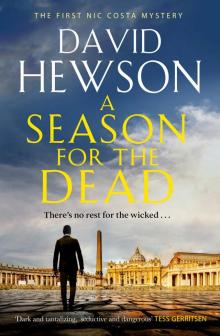 A Season for the Dead
A Season for the Dead The Killing tk-1
The Killing tk-1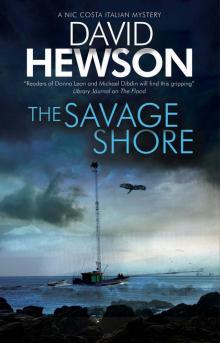 The Savage Shore
The Savage Shore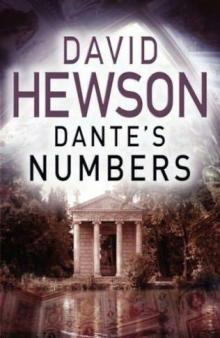 Dante's Numbers
Dante's Numbers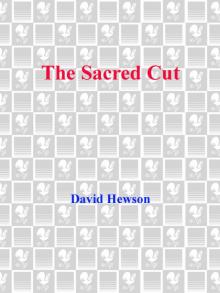 Sacred Cut
Sacred Cut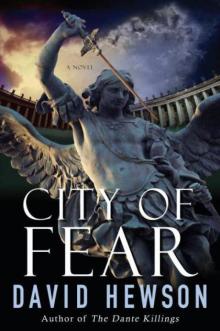 City of Fear nc-8
City of Fear nc-8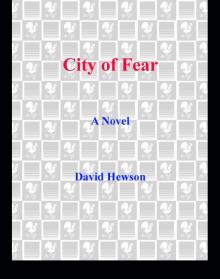 The Blue Demon
The Blue Demon The Garden of Evil
The Garden of Evil The Lizard's Bite
The Lizard's Bite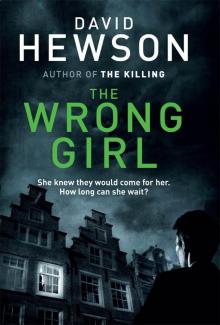 The Wrong Girl
The Wrong Girl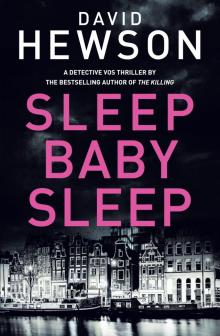 Sleep Baby Sleep
Sleep Baby Sleep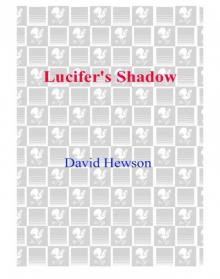 Lucifer's Shadow
Lucifer's Shadow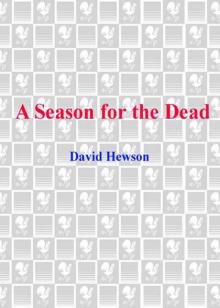 Season for the Dead
Season for the Dead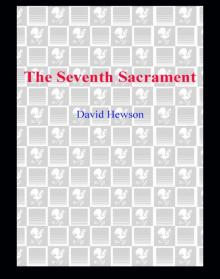 The Seventh Sacrament
The Seventh Sacrament The Garden of Evil nc-6
The Garden of Evil nc-6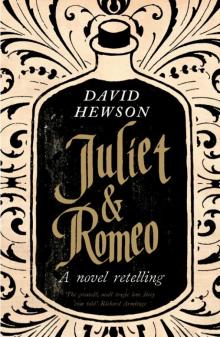 Juliet & Romeo
Juliet & Romeo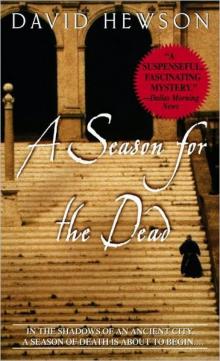 A Season for the Dead nc-1
A Season for the Dead nc-1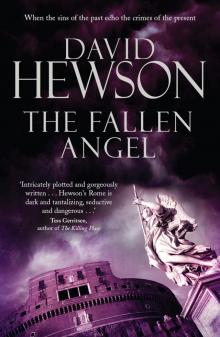 The Fallen Angel nc-9
The Fallen Angel nc-9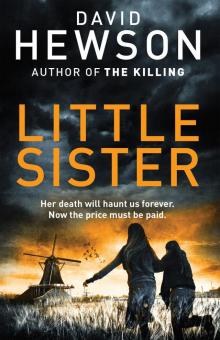 Little Sister
Little Sister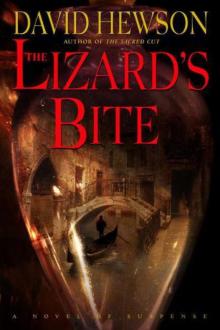 The Lizard's Bite nc-4
The Lizard's Bite nc-4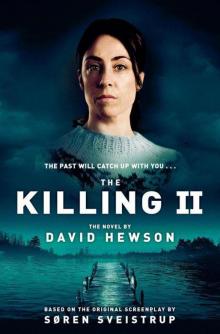 The Killing 2
The Killing 2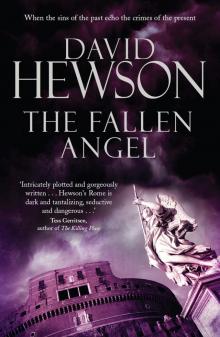 The Fallen Angel
The Fallen Angel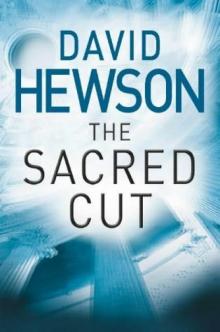 The Sacred Cut
The Sacred Cut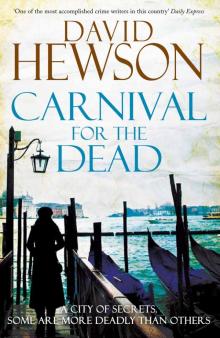 Carnival for the Dead
Carnival for the Dead The Villa of Mysteries nc-2
The Villa of Mysteries nc-2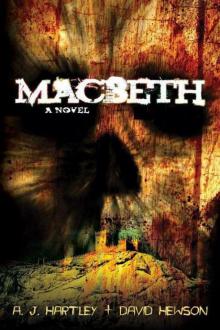 Macbeth
Macbeth The Killing - 01 - The Killing
The Killing - 01 - The Killing The Villa of Mysteries
The Villa of Mysteries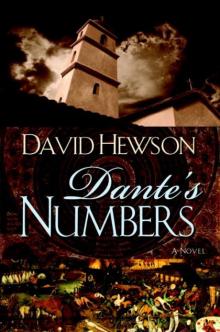 Dante's Numbers nc-7
Dante's Numbers nc-7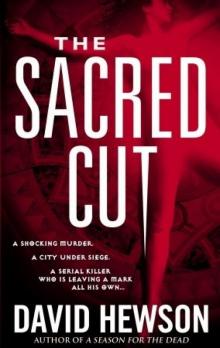 The Sacred Cut nc-3
The Sacred Cut nc-3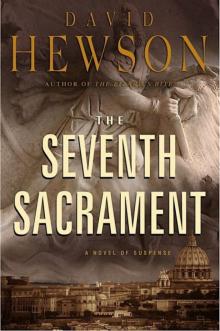 The Seventh Sacrament nc-5
The Seventh Sacrament nc-5